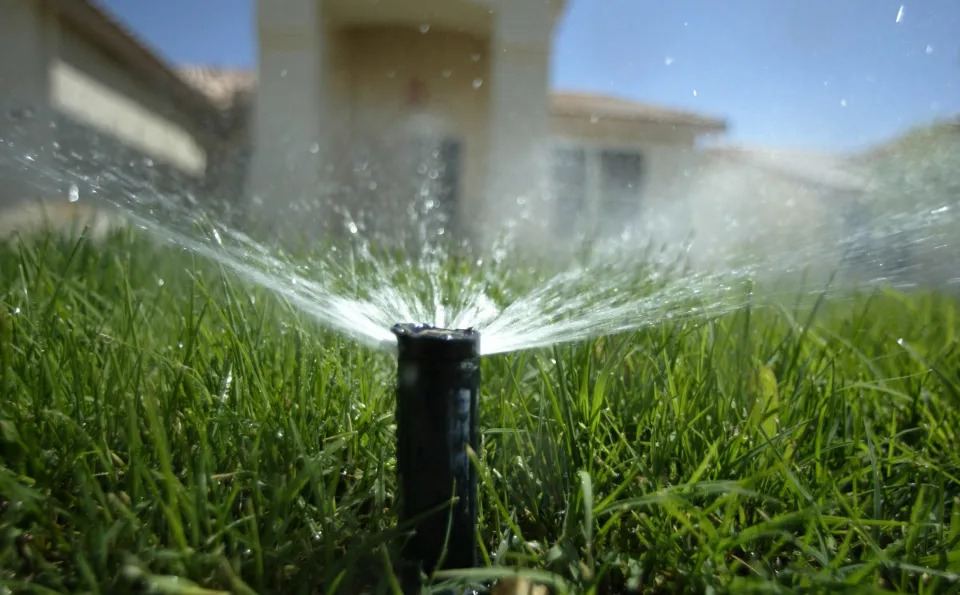Why don’t Arizona cities require residents to conserve water? It’s simple, really
Joanna Allhands, Arizona Republic January 29, 2022

Why don’t cities mandate conservation measures if Arizona needs to save water?
This is a question I get frequently, and there’s a simple answer: Because we’re not at that stage yet.
That doesn’t mean saving water is unimportant. Cities can and should be doing more to help residents use less.
But there are reasons why Arizona cities aren’t yet forcing residents and businesses to save – and we can see them playing out in California.-
California has struggled to save more water
California has essentially cut off State Water Project supplies to many cities and farmers this year because there isn’t enough water to go around. It also has announced another round of mandatory statewide restrictions on things like outdoor watering and car washing.
The state enacted mandatory conservation measures for the first time in 2015 to reduce usage by 25%. Many cities have generally sustained those savings, the result of converted landscaping and other measures.
But the state also widely missed its target last year to save an additional 15% – in part because those 2015 mandates took out the low-hanging fruit. If California wants to save more water now, it’ll require behavioral changes that residents may not be so eager to make, much less sustain over time.
That’s the downside of mandatory measures. If people aren’t willing to play along, the only way to get there is by enforcement, which is expensive, time consuming and usually anger producing.
That’s why Arizona cities are loath to use mandates.
Nearly all Arizona cities will mandate, eventually
But nearly all have plans to enact them, eventually.
Arizona water providers are required to create a drought preparedness plan – somewhat of a misnomer, considering that they are really about handling water shortages, not preparing for drought.
Actions increase as the stages progress, though the triggers for each stage vary by provider. Scottsdale and Tucson tie their stages in part to levels of shortage at Lake Mead, which makes sense, considering that they rely on a larger portion of Colorado River water than other major cities. Other cities base their triggers on more general reductions to surface water or their overall supply.
The actions that cities will take at each stage also vary. Most begin with cuts to water use at city facilities and voluntary actions for homeowners and businesses, which grow into mandates as the stages increase.
Most cities spell out which mandates they will consider at various stages, such as turning off water to splash pads, limiting ornamental turf, creating restrictions on outdoor watering or imposing fines on water wasters. Some require city council approval for actions taken in later stages.
Scottsdale and Tucson are already in stage 1
Because Lake Mead has reached its first level of shortage, Scottsdale and Tucson have already moved into stage 1 of their plans.
Scottsdale will no longer make water available to those who live outside city limits and is asking residents to voluntarily conserve 5%, perhaps by replacing turf and water-intensive landscaping, choosing not to overseed grass in the winter or by scheduling a free, city-provided review of their water use.
The water department is asking for additional money this year to fund its turf removal rebate and is ratcheting up its messaging about saving water. Officials hope that the more they can conserve voluntarily now, the less they will have to mandate later as Mead sinks into deeper levels of shortage.
Meanwhile, Tucson is sharing information with homes and businesses about their historical use and will send targeted conservation recommendations to those who use more water than their peers. The city also is reviewing whether to suspend new requests to join its water service area.
Do more to save – but voluntarily, for now
Some argue that cities should already be doing this stuff, and they have a point. If most actions in the first stage of cities’ plans are voluntary, why wait for a shortage trigger to enact them?
But cities also are right that rather than jumping to heavy-handed mandates that people may reject over time, the focus now should be on creating a positive culture of water conservation, where everyone agrees that if we’re going to live in the desert, we need to use less water, and any water we use must be done wisely.
Cities have done a decent job of that so far. Existing voluntary measures, along with more efficient appliance standards, have vastly cut water use over time. Arizona uses less water now than it did in the 1950s, even though millions more people live here.
It’s also worth noting that while metro Phoenix’s largest cities are home to half of the state’s 7-plus million population, they use 11% of Arizona’s water supplies. Even drastic cuts in use among these cities probably wouldn’t be enough to keep Lake Mead from falling into deeper tiers of shortage.
That doesn’t mean water is OK to waste, or that cities shouldn’t do more to encourage residents and businesses to use less water.
But the balance between carrots and sticks matters. And while mandates won’t be off the table forever, they are probably not the best way to compel lower use now.
